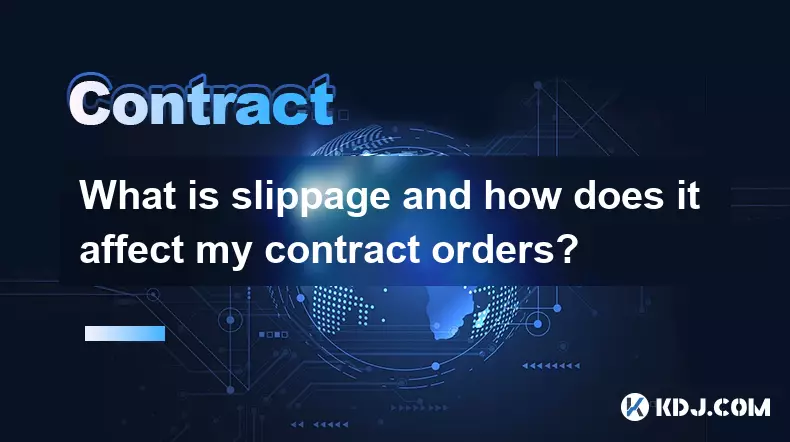-
 bitcoin
bitcoin $103094.926080 USD
3.95% -
 ethereum
ethereum $3398.208576 USD
6.43% -
 tether
tether $0.999971 USD
-0.04% -
 xrp
xrp $2.326205 USD
9.96% -
 bnb
bnb $947.145845 USD
4.46% -
 solana
solana $160.315987 USD
7.54% -
 usd-coin
usd-coin $1.000014 USD
0.01% -
 tron
tron $0.288163 USD
2.37% -
 dogecoin
dogecoin $0.164881 USD
5.50% -
 cardano
cardano $0.536519 USD
7.14% -
 hyperliquid
hyperliquid $40.526327 USD
6.62% -
 chainlink
chainlink $14.898178 USD
5.68% -
 bitcoin-cash
bitcoin-cash $483.923206 USD
4.44% -
 ethena-usde
ethena-usde $0.999280 USD
0.02% -
 stellar
stellar $0.276354 USD
6.32%
Can I use an API to trade contracts automatically?
Yes, you can automate crypto contract trading via API, enabling real-time execution, position management, and strategy backtesting with proper security and coding.
Nov 06, 2025 at 09:25 am

Understanding Automated Contract Trading via API
1. Yes, it is entirely possible to use an API to trade contracts automatically in the cryptocurrency market. Most major exchanges offer RESTful APIs and WebSocket interfaces that allow developers to access real-time market data, place orders, manage positions, and monitor account balances programmatically. These APIs are essential tools for algorithmic traders who rely on speed, precision, and automation to execute strategies.
2. The process begins with obtaining API keys from a supported exchange. These keys authenticate your requests and grant specific permissions based on the settings you choose during creation. For contract trading, it's crucial to enable trading permissions while avoiding withdrawal rights unless absolutely necessary for security reasons.
3. Once authenticated, you can send commands such as opening long or short positions, setting stop-loss and take-profit levels, adjusting leverage, and closing trades. Many traders build bots using programming languages like Python, Node.js, or Go, integrating them with exchange APIs through libraries specifically designed for this purpose.
4. Some platforms also support FIX (Financial Information eXchange) protocols for high-frequency trading scenarios where latency must be minimized. This level of integration allows institutional-grade systems to operate at scale across multiple markets simultaneously.
5. Security remains a top concern when using automated trading APIs. Keys should be stored securely using environment variables or encrypted vaults. Additionally, implementing rate limiting, IP whitelisting, and two-factor authentication significantly reduces the risk of unauthorized access.
Key Features Enabled by Trading APIs
1. Real-time price feeds allow bots to react instantly to market movements. By subscribing to WebSocket streams, traders receive tick-by-tick updates on order books, trades, and funding rates—critical information for futures and perpetual contracts.
2. Order execution becomes faster and more reliable compared to manual trading. Limit, market, stop-market, and reduce-only orders can all be triggered based on predefined conditions coded into the system.
3. Position management is streamlined through API endpoints that return current holdings, unrealized P&L, margin usage, and liquidation prices. This data enables dynamic adjustments to open positions in response to volatility spikes or trend reversals.
4. Backtesting frameworks often integrate directly with historical API data, allowing strategies to be tested against past market behavior before deploying live capital. Accurate simulation requires high-quality time-series data, which many exchanges now provide via dedicated endpoints.
5. Multi-exchange arbitrage opportunities become accessible when APIs from different platforms are combined. Traders can detect price discrepancies between exchanges and execute cross-platform trades to capture small but consistent profits.
Risks and Considerations in API-Based Trading
1. Network latency can lead to missed executions or slippage, especially during periods of high volatility. Even minor delays may result in unfavorable fills or failed orders, impacting overall performance.
2. Exchange downtime or API outages can disrupt operations unexpectedly. Relying solely on one platform increases exposure to technical failures, making redundancy and failover mechanisms important components of robust systems.
3. Market manipulation tactics such as spoofing or wash trading can mislead algorithms that rely purely on quantitative signals. Without proper filtering logic, bots may enter losing positions based on artificial liquidity or false breakouts.
4. Regulatory compliance varies across jurisdictions. Automated trading activities might fall under scrutiny depending on local financial laws, particularly if they involve leveraged derivatives or large volumes.
5. Poorly designed algorithms can generate excessive transaction costs due to overtrading or inefficient order placement. Monitoring fee structures and optimizing execution paths helps preserve profitability over time.
Frequently Asked Questions
What types of contracts can I trade using an API?Most crypto exchanges offer APIs that support futures, perpetual swaps, and options contracts. These include both USD-margined and coin-margined variants, giving traders flexibility in how they structure their exposure.
Do I need programming experience to use trading APIs?Yes, effective use of trading APIs typically requires knowledge of programming languages such as Python, JavaScript, or C++. Understanding HTTP requests, JSON parsing, and asynchronous programming is essential for building reliable trading bots.
Can I run my trading bot 24/7 without supervision?While technically feasible, running a bot unattended carries risks. Unexpected market events, software bugs, or connectivity issues can lead to significant losses. Regular monitoring and emergency shutdown protocols are strongly recommended.
Are there pre-built tools available for API-based contract trading?Yes, several third-party platforms offer ready-to-use solutions for automated trading. Tools like Gunbot, HaasScript, or Hummingbot provide graphical interfaces and built-in strategies, reducing the need for custom coding while still connecting to exchange APIs.
Disclaimer:info@kdj.com
The information provided is not trading advice. kdj.com does not assume any responsibility for any investments made based on the information provided in this article. Cryptocurrencies are highly volatile and it is highly recommended that you invest with caution after thorough research!
If you believe that the content used on this website infringes your copyright, please contact us immediately (info@kdj.com) and we will delete it promptly.
- Securitize, VanEck, and Tokenized Treasuries: Bridging the Gap Between DeFi and Traditional Finance
- 2025-11-06 23:25:01
- MUTM, Crypto Mutuum, V1 Launch: The DeFi Project to Watch in 2025
- 2025-11-06 22:45:01
- Navigating the AI Bubble, Bitcoin, and Crypto Markets: A New Yorker's Take
- 2025-11-06 23:45:01
- Bitcoin Investors, Blazpay, and the Crypto Explosion: What's the Deal?
- 2025-11-06 23:20:01
- Justin Sun's ETH Staking Spree: A Lido Love Affair?
- 2025-11-06 23:35:01
- Free Crypto, Bitcoin Mining & Passive Income: The 2025 Guide
- 2025-11-06 23:00:02
Related knowledge

How to trade a quarterly futures contract versus a perpetual contract?
Nov 06,2025 at 06:44am
Understanding the Core Differences Between Quarterly and Perpetual Contracts1. Quarterly futures contracts have a fixed expiration date, typically set...

How to understand the liquidation engine for a crypto contract?
Nov 06,2025 at 09:05am
Understanding the Role of Liquidity Pools in Decentralized Finance1. Liquidity pools are foundational components within decentralized exchanges (DEXs)...

How to use a demo account to practice trading contracts?
Nov 06,2025 at 08:55am
Understanding the Purpose of a Demo Account in Contract Trading1. A demo account allows traders to simulate real market conditions without risking act...

What is slippage and how does it affect my contract orders?
Nov 06,2025 at 05:14am
Understanding Slippage in Cryptocurrency Trading1. Slippage refers to the difference between the expected price of a trade and the actual price at whi...

How to report crypto contract gains on my taxes?
Nov 06,2025 at 06:20pm
Tax Classification of Cryptocurrency Gains1. Cryptocurrency contract gains are typically treated as capital gains in most jurisdictions, including the...

What are the trading hours for CME Bitcoin contracts?
Nov 06,2025 at 02:59pm
Understanding CME Bitcoin Futures Trading Schedule1. The CME Group offers Bitcoin futures contracts that trade nearly around the clock, aligning close...

How to trade a quarterly futures contract versus a perpetual contract?
Nov 06,2025 at 06:44am
Understanding the Core Differences Between Quarterly and Perpetual Contracts1. Quarterly futures contracts have a fixed expiration date, typically set...

How to understand the liquidation engine for a crypto contract?
Nov 06,2025 at 09:05am
Understanding the Role of Liquidity Pools in Decentralized Finance1. Liquidity pools are foundational components within decentralized exchanges (DEXs)...

How to use a demo account to practice trading contracts?
Nov 06,2025 at 08:55am
Understanding the Purpose of a Demo Account in Contract Trading1. A demo account allows traders to simulate real market conditions without risking act...

What is slippage and how does it affect my contract orders?
Nov 06,2025 at 05:14am
Understanding Slippage in Cryptocurrency Trading1. Slippage refers to the difference between the expected price of a trade and the actual price at whi...

How to report crypto contract gains on my taxes?
Nov 06,2025 at 06:20pm
Tax Classification of Cryptocurrency Gains1. Cryptocurrency contract gains are typically treated as capital gains in most jurisdictions, including the...

What are the trading hours for CME Bitcoin contracts?
Nov 06,2025 at 02:59pm
Understanding CME Bitcoin Futures Trading Schedule1. The CME Group offers Bitcoin futures contracts that trade nearly around the clock, aligning close...
See all articles










































































